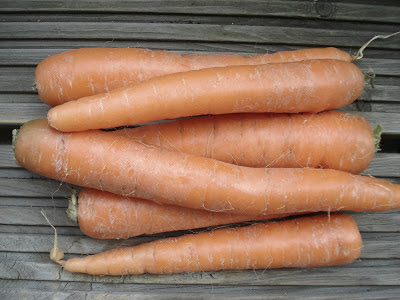All In Good Time
I would sometimes wonder what one could possibly want with a bushel of aubergines, but now I know: I've tucked away at least two kilos' worth of babaghanouj on my very own just this past week, and I've just made a fresh batch today. Most supermarkets sell several varieties of this dip/salad/sandwich saver, so you may wonder 'why bother making your own?' Well, for one, babaghanouj is extremely easy to make, no special appliances are necessary -just an oven or a barbecue, a knife and a fork. And another reason for homemade is that the flavours can be so much better, fresher and more intense!
Eggplants are used all over the Mediterranean basin, and variations of this dish can be found in Morocco, Tunisia, Turkey, Greece and Israel. Moutabiel in Tunisia is very much a carbon copy of babaghanouj, whereas a Turkish friend said that their version is chunkier, and very much resembles my father's aubergine salad. Whichever form yours will take, it is always a good thing to have handy in the fridge.
Babaghanouj
Yields about 500ml or 2 cups
2 large eggplants or 4 smaller ones
3 Tbs cumin seeds
2-3 Tbs tahine paste
1 bunch cilantro/fresh coriander, or ½ bunch parsley, or both
3 cloves garlic
2 lemons, preferably organic or unwaxed
salt and pepper
olive oil
Pre-heat the oven to 200°C/400°F.
Cut the aubergines in half, and score the flesh in a deep criss-cross pattern.
Chop the garlic.
Combine the cumin seeds and garlic with a generous pinch of salt and pepper, and rub into the eggplants' crevises. Drizzle with olive oil.
Place the eggplants flesh-side down on a lined baking tray. Bake in the pre-heated oven until the skin begins to char, and the flesh is soft, about 30 to 45 minutes.
Let the aubergines cool down, before scraping out the flesh into a mixing bowl.
Finely chop the cilantro and/or parsley, and mix into the aubergine flesh.
Add the tahine, the zest and juice of one lemon.
Stir vigorously until the purée is as smooth as you like: you can also use a blender or a food processor if you prefer a very smooth babaghanouj.
Taste for seasoning and adjust accordingly: you may want to add the juice of the second lemon, or mix in an extra clove of raw garlic.
If you prefer a looser dip, drizzle in some more olive oil.
This moutabiel deserves star treatment, so pile it up in a bowl, and drizzle with more olive oil, sprinkle with sesame seeds, a pinch of ras el hanout, and perhaps some dried thyme leaves. Serve with thin slices of bread, some pita wedges or even with a few crudités.
My Lebanese friends may insist that fresh is best, but babaghanouj does keep very well, and I find that the flavours mellow out nicely over a few days. In fact, it can be frozen as well. However, it will look a little lumpy on defrosting: just give it a good stir, and it should become smooth again. Of course, freshly made does taste better, so you can freeze plain, roasted eggplants instead, and turn them into babaghanouj when you defrost them.
Bon app'!








Comments
Post a Comment